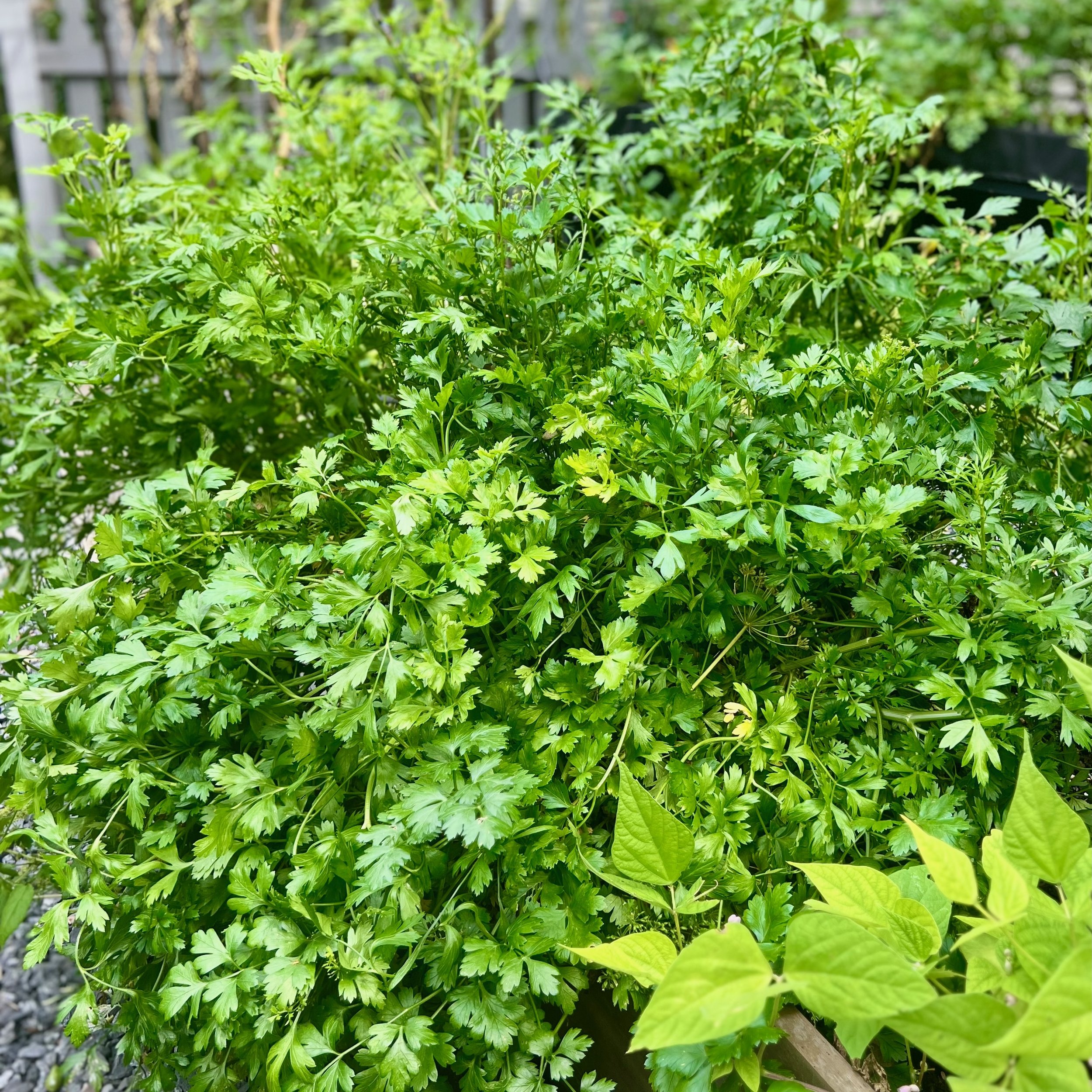Three plants with standing reservations
It’s time to start planning our vegetable gardens and deciding what will make the cut for 2025. Experimenting with new plants is one of the joys of gardening, especially in the kitchen garden, and mine evolves quite a bit from year to year. While I always grow zucchini, the specific varieties rotate annually as I try out new ones for flavor and pest resistance. (Squash vine borers, we see you.)
That said, a few plants have earned “standing reservations”—staples that find their way into every garden I design, for myself or my clients. Please meet my featured favorites: anise hyssop, parsley, and buttercrunch lettuce. They may not seem like the ultimate power trio, but hear me out!
#1 Anise Hyssop:
The Pollinator Magnet
Anise hyssop (Agastache foeniculum) is one of the most versatile plants in the garden. With its striking purple spires, it’s a pollinator magnet, drawing bees, butterflies, and camera-shy hummingbirds. This perennial beauty reliably returns year after year, requiring minimal effort while offering maximum impact.
Why I Love It
Anise hyssop’s leaves and flowers are edible but I dislike the faint taste of black jellybeans so it’s the pollinator activity that inspires me. It makes my list of winter favorites too. The dried flower heads add structure and beauty, supporting wildlife and enhancing the visual interest of the dormant garden.
Why It Works in the Kitchen Garden
Its upright growth habit makes it easy to incorporate into garden designs without taking up valuable horizontal space. The nectar also attracts parasitic wasps..and that is a GREAT thing. They are, after all, the ultimate garden protectors, members of the fierce beneficial insect army.
#2 Parsley: The Overachiever
Parsley (Petroselinum crispum) might seem a bit generic to have on the list but it’s currently January in New York, a frigid 19F outside, and this brilliant herb is still vibrant green and harvestable. The larger, outer leaves are frozen but sweeter than ever and thaw in your hand before you make it inside.
Why I Love It
Parsley’s extended season means you’ll have a pop of green for your dishes when the garden begins to quiet down. It’s a mood lifter! Garden parsley also has so much more flavor than its grocery store counterpart.
Why It Works in the Kitchen Garden
Abundance. Parsley is a dependable producer that fills spaces beautifully while playing well with its neighbors. I always plant a few extra because it serves as a host for caterpillars of the Swallowtail butterfly. If you spot a green and yellow caterpillar, let it be—they aren’t greedy and will move on quickly.
Parsley is a biennial, but I grow it as an annual to enjoy its best leaf production during the first year. By the second year, parsley shifts its energy to flowering and seed production, so I replant annually for optimal harvests.
#3 Buttercrunch:
The Perfect Lettuce
Buttercrunch lettuce (Lactuca sativa) is the most-requested variety by clients—and for good reason. Its tender, flavorful leaves are perfect for salads, and it stands out for its ability to handle both heat and cold with grace.
Why I Love It
The compact, rosette-shaped heads are not only delicious but also attractive. It’s tied with cabbage for the most photogenic veg in the garden. For classic Buttercrunch, I buy these seeds from Pinetree. Hudson Valley Seed Co sells these delicious Buttercrunch Bibb seeds.
Why It Works in the Kitchen Garden
Buttercrunch thrives in small spaces and adapts well to different planting seasons. Its resistance to bolting in warmer weather ensures a steady supply of greens even during the heat of summer. We tuck it under the tomato and other plant canopies for protection against direct sun and in turn get the benefits of a living mulch. A reminder that a harvested plant is a happy plant; be sure to pick the outer third of the leaves each week.
What plants have earned a permanent spot in your plans? Share your go-to favorites—I’m always looking for new ideas to try.
Return to the Gardenwell Journal






